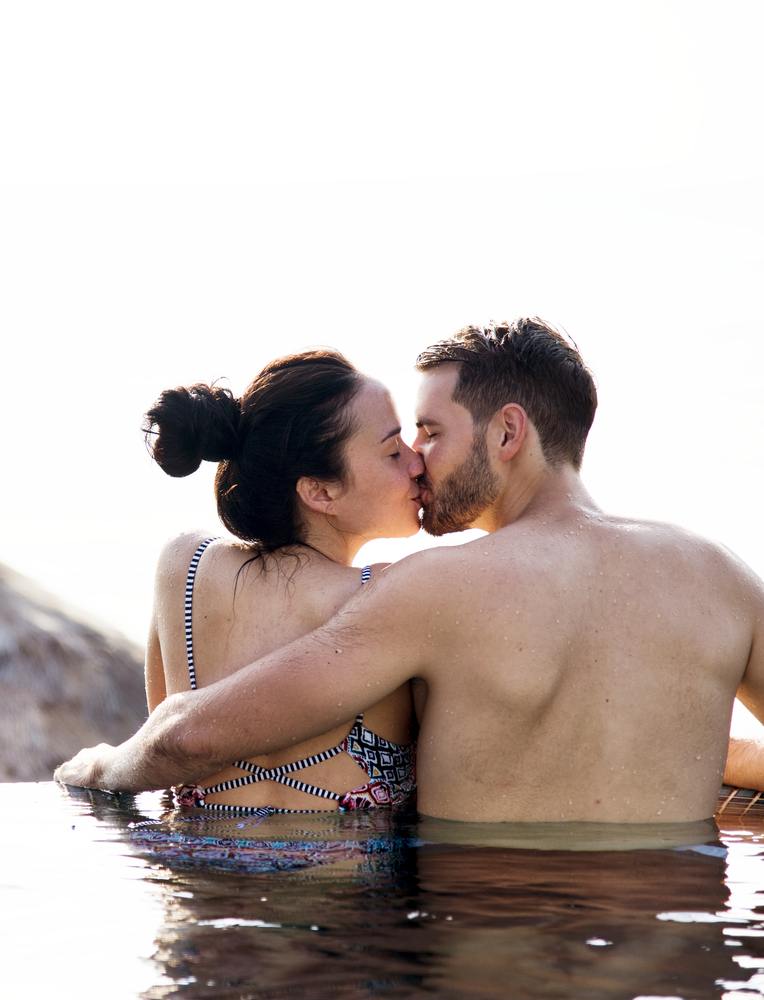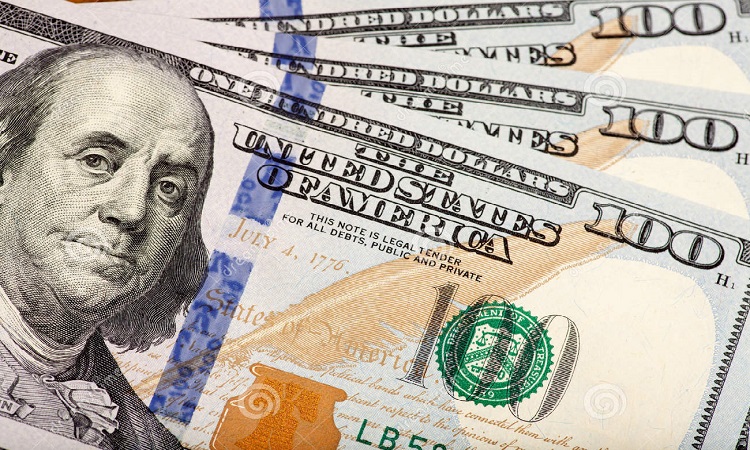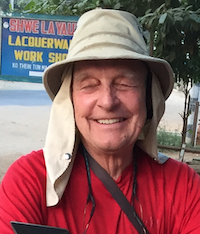Table of Contents (TOC)
quick links to main Travel Safety posts
1) Safety: Introduction & Risks
3) Tourist Behavior factors
I. General:
... act respectfully
Quick links
II. Travel Stages:
A. Pre-flight
B. Long Flight's Energy Drain
C. Arrival & Customs
Travel Safety: Tourist Behavior
I. GENERAL:
At all stages of our lives we develop, practice and refine our behaviors for various private & public venues.
At home - alone - we dance & sing with wild abandon, but at the Club we conform to the current style. We are relaxed & crazy with friends, but overly polite, and conservative with Grandma. On a ‘date’ we are what we think the other person wants to see.
Please SEE "four-selfs": Safe 2: Appearance
At school, we are ‘cool’ with friends, but may unkindly disdain others. When alone in public we may be self-conscious, yet bold and outspoken amongst friends or our tour group.
Age often alters our behaviors: younger: adventurous, curious; yet when older, perhaps more conservative, less risk-taking or bold, or quite the opposite: confidant, or overly so; outspoken,
While a foreign country is just another venue it is usually alien to our own; ..... sometimes dramatically so.
KEY: act respectfully
◀︎◀︎◀︎ Scroll UP ▲ to return here to TOC
Particularly, Asia’s many cultural nuances — local traditional dress, a walk or gait, posture & even their walking direction. 
All such subtleties suggests great familiarity & intent of purpose - perhaps back to work or home. Their natural behavior may be a cultural shield against the usual scammer or pickpockets.
You won’t have this cultural shield. Quite the opposite, in spite of the best suggestions you will always be an obvious “tourist.”
So, our personal travel behavior(s) should probably be based on:
1. our own cultural experience,
2. our travel needs (dinner party vs trekking) &
3. our host country’s cultural guidelines.
Each country has its own guidelines which we should research a bit and practice at home so we feel comfortable, and neither insult locals nor attract the criminal element.
For example, the Thai people  greet everyone with ‘wai’ — a slight bow, palms pressed together in prayer-like fashion.
greet everyone with ‘wai’ — a slight bow, palms pressed together in prayer-like fashion.
Higher the hands relative to your face & lower the bow, the more respect or reverence you display.
So Imagine you enter a Thai Seven-11, you greet the clerk with a slight bow with prayer-like hands held below your face to the clerk. BUT, .. moments later you help a very old Thai women get milk off a high shelf by 1st bowing much lower with hands much higher. Asians truly respect the elderly.
Practice this ‘wai’ with your traveling friends at home. At 1st you’ll feel self-consciously silly, but once in Thailand you will sense the local’s appreciation of your traditional respect. It is a good feeling.
Some of our proposed “travel behaviors’ will be obvious like NOT talking loudly in a church or temple. OTOH, we may not realize some of our behaviors that offend: e.g.: letting the bottom of our feet ‘face’ an Asian temple’s altar.
Remember please: You are an American Ambassador.
Always show respect?
“Travel & Act with respect!

Act Respectfully
The Ultimate Guide to Customs and Etiquette in Vietnam (sensitivity to a culture’s mores); https://vietnamvisa.govt.vn/vietnam-travel-tips/the-ultimate-guide-to-customs-and-etiquette-in-vietnam/ (No apparent site name or author … sorry)
“The Vietnamese people value humility, restraint, and modesty. Avoid being boastful or showing off wealth."
Public displays of affection (PDA): Asia's cultural, historical, and religious influences considered kissing, scanty clothing, etc a 'private matter'; inappropriate, especially in traditional or rural areas,
SAFE PRACTICES
1) Get a “general feel” for the values and customs of culture preferably before you leave home, because almost impossible to remember all specific etiquette rules.
2) “However, when aware of cultural values, be overly sensitive too anything in opposition to those values.”
No! Nada! Ja!, na’am!, aaho!, Da!, Ari!, Hahin!, iie!, Nahi!, Da! →

ANECDOTE: "The Ugly American"
Sadly, Americans have a bad reputation.
Marlon Brando’s 1963 movie “Ugly American” (1958) book branded the American Tourist as stereotypically loud, arrogant, demeaning, thoughtless, ignorant & extremely ethnocentric.
Unfortunately, enough American tourists have validated this pejorative description among host countries. I have been embarrassed to see them in action.
ANECDOTE 1: In Bayeux, Normandy, France
.... a small family invited me to join their table for dinner. Chatting for some reason about tourists, Frank commented how Americans are known to talk ‘loudly.’ referring me to 2 American women across the restaurant whose every word was heard by all. They were not rude; just insensitive; very much like today’s cell phone users.
ANECDOTE 2: In small Mexican Coast Village
.... a big, loud American man berated 3 girl clerks in a Mexican ice cream shop because each performed a single function: 1) one makes a cone & passes to 2) counter clerk who gave it to customer and 3) the cashier.
He rudely exhorted this inefficient & slow service process too ignorant to realize that it gave 3 poor girls a job instead of the efficient 1 clerk practice. He was rude, insensitive, and a bully. I felt ashamed.

SAFE PRACTICES
I try to reflect the best of Americans.
Knowing the "Ugly American" image above, I consciously counter that stereotype with my own positive behavior.
1) Anecdote 1:
At a Chinese bus depot an old man approaching our bus tripped on a cement curb falling hard to the pavement. I instantly jumped off the bus to assist him to his feet & onto the bus. The women on the bus looked at me with surprised admiration. .. but a natural reaction for this American.
2) Anecdote 2:
A Thai man applauded me from across the street when he saw me hold the ‘7-Eleven' door open for an elderly Asian woman. Just common American courtesy, I hope, ..... although I see it less & less now (9/14/25).
Curiously, I am even more aware of these situations abroad than I am at home.

Arrival, Disembark & Customs
Please SEE: Foreign Travel Itineraries
1) Excitement of pre-trip research & planning has been building for months,
2) “The Chute”: your departure airport’s check-in

3) A long flight(s) emotional & physical drain
4) Arrival, disembark & walk to Customs
5) Customs Kiosk Entry process,
6) Transportation from airport to your city lodging.
Our foreign tourist’s “behavior” makes us easy prey: -----
Let’s look more quickly closely at each of the above travel stages and my strategies
II. Travel Stages:
Much of our typical initial tourist behaviors are a product of pre-travel excitement anxiety, a long flight, and the host airport’s arrival and customs process. The closer to your departure date the more that anxiety melds into that mix. Anticipation & anxiety are the yin-yangs of travel.
Once you've navigated your home airport’s departure process, endured a long flight, and landed to begin an even more intense, somewhat chaotic, often confusing arrival airport’s customs process you are a frazzled heap of exhausted anxiety.
You are also perfect prey for the airport terminal’s pickpockets and other scammers who recognize & will try to take advantage of your justifiable, malaise & discomfort.
A. Pre-flight & Customs:
Let’s look more closely at this process/scenario.
Once you are aware that you will experience a mix of emotions and physical numbness, you can plan in advance how to adjust your behaviors to neutralize pickpockets and scammers.
If you take the time to scan the following elements of my “Pre-travel / long flight / more Customs” process, you can reduce your stress & fatigue and airport pickpockets & scammers.
Yes, I know that pickpockets & scam artists will be hunting us, but this prime PURPOSE of this “Pre-flight & Customs ” section is to prepare YOU, in advance, to foil them long before you have left home.
Let’s explore how.
1. Pre-trip excitement:
Months before I travel I have decided on the host country and have begun my research. The more I research the deeper I dive and the more excited I become about each n ew detail – a new site, a train schedule solution, a historical insight. All adds to my continually increasing excitement and anticipation. I try to imagine it all.
ew detail – a new site, a train schedule solution, a historical insight. All adds to my continually increasing excitement and anticipation. I try to imagine it all.
Even those travelers who don’t do the planning, cannot evade the pending foreign trip’s growing anticipation; sensing, perhaps hoping, it may amaze or even change them.
The professional or business owner dreads the loss of work time, but thrills at the temporary escape from responsibility; the ‘pause’ to catch a long overdue breath, or even to ‘test’ retirement.
Others may relish the opportunity to challenge their life’s direction & validity, self-worth, overcoming fears, probing the ‘possibilities” of a life-long curiosity, and possibility of a whole new passion to pursue.
Unfortunately, that pre-trip anticipation, excited planning, fantasizing, packing, night-before-flights anxiety, often early morning ride to airport, and check-in intensifies our emotions - both positive & negative. It’s palpable.
2. The ‘Chute’:
When I was a young boy in Catholic school (for delinquent kids) we  had a large metal tubular fire escape chute that went from the 2nd floor to the playground.
had a large metal tubular fire escape chute that went from the 2nd floor to the playground.
Throughout my life, that tube would always be my metaphor for my commitment to finish something I had started: “Once in the chute, I couldn’t go back.”. I couldn’t back “up” out of the ‘fire escape chute’ once I had started down. ……. and, boy, was it fun.
3. Travel day:
After uneasy sleep, shower & shave, I put on last night’s carefully laid out clothes, check my 2 bags & passport pouch contents -again, pat my cell phone, jump in Uber, drive quietly to the airport, & check-in.
Sometime after passing thru my airport’s security,  I realized I was ‘in the chute.” My trip had started, no turning back.
I realized I was ‘in the chute.” My trip had started, no turning back.
"All research, planning & preparation, all lingering worries were ‘in stone", I silently said to myself, “I’m ‘in the chute.’ My trip has started.”
There was no niggling fear that I forgot to do or bring something, no more research. preparation and planning — my next great adventure had ALREADY begun. A very calming, a fait accompli, .. a done deal.
Terminology Used in Airports and In-Flight: https://www.ifly.com/airport-info-and-tips/airport-terms
B. Long flight's drain:
In contrast, while I don't particularly enjoy the long flights and airport’s Customs departure & arrival process, I have developed practices that reduce the negatives converting them into the modest price I pay for my next incredible 2 to 3 months travel adventure.
Some travelers, particularly Americans, dread the long flights across  oceans to their destination country. Sitting in somewhat uncomfortable chair, jammed between others with only the occasional walkabout bathroom break, a movie dinner, some reading, snacks, and if you're lucky, sleep.
oceans to their destination country. Sitting in somewhat uncomfortable chair, jammed between others with only the occasional walkabout bathroom break, a movie dinner, some reading, snacks, and if you're lucky, sleep.
ANECDOTE: my friend, a frequent American business flier.
My friend after years of travel between the United States and China coordinating design and manufacture of her company’s furniture products, will no longer travel primarily because of the to & from customs & flight hassle.
My Personal Opinion: Her ‘work’ purpose' killed' any ‘tourist travel desire.” I understand.
I do NOT dread the flight — its the REAL escape “chute”.. Once, “wheels up” and a plane’s tail drops ominously a little bit as the plane’s wheels retract into the fuselage, I know I have begun passage from Earth up to the Viking’s Valhalla …. 37,000 ft cruising altitude.
All my life’s home issues are suspended, simply because I can't be reached for next several hours (... no cheap in-flight cellular then). During this many-hour-long reality suspension, I now transform into ‘Scott, the Solo Independent Traveler’--new existence with no other life.
1. My Long Flight Drill:
Over the years I've developed an in-flight routine that simplifies the flight & eases my plane exit.
a. Overhead compartment:
1. Before entering the plane, if convenient, I hand carry in my pockets or in a cheap grocery bag in my daypack's upper compartment for easy access to what I will need/use during flight i.e. books food, etc.
2. Before sitting down, pull out your plastic bag of stuff. NOTE: Avoid that extra bag that will sit  under seat ahead of you cramping your feet for entire flight.
under seat ahead of you cramping your feet for entire flight.
3. Overhead luggage Bin:
a) Ideally, choose a compartment on the opposite aisle side as your seat so you ‘see’ (security) your bag when compartment is opened, 
b) Position your carry-on bag in the overhead bin upright to bin’s side so less likely to have other’s stuff jammed on top or moved about.
Example: I turn my daypack on its side jammed against overhead’ compartment's side with daypak’s compartments locked with MY airline cable, BUT facing me across the aisle for easy access during flight.
b. Long Flight Time:
Once settled in my seat I do what pleases me (inflight entertainment, reading, sleep, etc) until the 1st big meal. Depending on how long before the 1st big meal, I make a couple of bathroom walkabouts.
1) Bathroom walkabouts:
I plan for these bathroom walkabouts because I get some stretching exercises, a walkabout, and, oh yes, the bathroom.
I usually get an aisle seat near plane’s rear for several reasons:
a. close to bathrooms,
b. close to kitchens in case I want to ask for  something (snacks,
something (snacks,
etc),
c. but most importantly, usually a lot of room between emergency exits & kitchen to sneak in some stretching exercises as long as I don’t obstruct attendants.
My walkabout is a grand loop as far forward as possible, then cross over to & back down the other aisle to bathroom & my seat — mainly for exercise.
2) Big Meal … then sleep:
I find airline meals quite good, particularly at 37,000 feet, but, after a big meal, I take a ½ Dr.-prescribed sleeping pill that knocks me out for ~ 4 hrs.
Then, I awake with only a few more hours of snacks, entertainment, “Foreigner Disembarkation Card” completion, & a pre-landing bathroom visit .... before everyone else.
C. Arrival & to Customs:
Now the fun begins …BUT in reverse: …
On landing & taxiing to your gate, your tension & excitement ramps up again. A slow, chaotic de-planing, often long walk down sterile hallways to Custom’s long lines, a brief ‘interrogation’, a 2nd hike & stand-about at Baggage Claim carousel & Customs & Declaration …. and then … freedom.
You may be tired, sore from the claustrophobic seats, maybe hungry, excitement mixed with the natural anxiety of a totally different world, your circadian clock is about to subtly spin into jet lag mode.
I know, it makes you want to get back on the plane and go back home. While I am painting a very dreary picture, the reality is with patience, pre-trip research & practical prudence you will suffer little of significance.
Here, in this post, I'll give you the stripped-down version of this process. A more extensive detailed discussion of Arrival > Customs > Freedom process is in my sub-post: Airport arrival procedures. [pplk: sub-post: Airport Arrival Procedures]]
1. Pre-land & exit:
Most Folks: After locating ‘all’ their personal ‘seat’ stuff’ AND staying seated until ‘seat belt’ signs turn off, …. half sitting/standing they, try to squeeze into the aisle, grab their overhead bag without hurting anyone,
and then, ….
stand like sardines for the ‘Long Wait” (20 > 30 minutes average) as everyone ahead also gets up and stands…. waiting.
Remember, handicapped, 1st class & business class usually get off first.
MY Best Practices:
If small stuff at your seat is no longer needed, ASAP before landing, put back in your carry-on luggage. If stuff you still want close to you, put in your pockets so you don’t forget them at touchdown.
Having stored my personal stuff again before landing, I stay seated reading or reviewing my Airport > Hostels transportation & itinerary notes patiently waiting the 20 minutes +/- for the rows & aisle ahead of me to empty.
Once the seats & most of the aisle ahead are mostly clear, I move into the aisle, take down my carry-on from overhead compartment and calmly walk up the aisle & de-plane among the last (5>10 min).
2. Walk & wait at Customs:
Depending on the airport, Customs can be close at hand or a long interminable slog down cold impersonal hallways. High Point: bathrooms usually on the way.
Most Folks: Rush to Customs area like drought-parched cattle thundering to the next watering hole.
ONLY to be immediately herded into a series of narrow snaking lines moving very slowly forward to the ‘next’ available Custom Officer’s Passport Approval kiosk.
MY Best Practices:
Already behind most passengers, I make a restroom stop, splash some water on my face and move on relaxed because often once at Customs we ALL must wait.
3. Customs Kiosk Process:
At Customs kiosk window you present your passport &  “Disembarkation Card for Foreigner” (You got it from Flight Attendant before landing.)
“Disembarkation Card for Foreigner” (You got it from Flight Attendant before landing.)
Custom Agent checks computer database for your Visa status, perhaps asks purpose of trip while comparing your face to your passport photo, a few more computer inputs, then, often with great gusto, your passport is stamped one or two times, you are Welcomed and told to proceed to Baggage Claim. Phew! Past the anxious part.
Emerging Future: At this moment US Airports are replacing hi-tech self-serve passport kiosks with 
‘facial recognition cameras’ attended by customs officers. Soon, the entire process will be AI controlled; probably be more accurate & faster. ON to Baggage Claim.
4. Baggage Claim:
Most Folks: scurry to their flight’s Baggage Claim Carousel having their airline & flight number electronically posted above.
Soon the milling crowd packs in around the  baggage chute or spreads around oval carousel watching for 1st bag to rumble down the baggage conveyor, & land on a turntable before sliding down the chute onto the Carousel’s long continuous rotating belt.
baggage chute or spreads around oval carousel watching for 1st bag to rumble down the baggage conveyor, & land on a turntable before sliding down the chute onto the Carousel’s long continuous rotating belt.
Once their bag is seen, passengers frantically jostle their way to the Carousel frantically grabbing it, then pushing often rudely back out thru the crowd. Does little good to jockey aggressively next to the baggage chute.
MY Best Practices:
Arriving LATE/LAST at Baggage Claim early birds already have their bags so easier to find mine which may already be riding around the carousel.
So, position yourself on the same side of Carousel that chute empties onto. There you can see your bag coming down the incoming baggage belt as it approaches the chute and slides down onto the carousel.
When you see your bag hit the carousel, politely follow it downstream where you can easily & politely get next to the carouse, remove your bag & politely move off to Declarations. (Note: politely)
5. Declaration Process:
Many countries impose a Customs Duty on certain goods & prohibit other goods. Custom Duties protect a country's economy, residents, jobs, environment, etc.
Duty on certain goods & prohibit other goods. Custom Duties protect a country's economy, residents, jobs, environment, etc.
‘Prohibited’ items enforce a society’s laws: illegal drugs, weapons, certain foods & animals that may carry diseases or bugs endangering their agriculture.
Most countries provide this info online for pre-trip research …AND …just before landing your flight attendant will give you a “Disembarkation Card for Foreigner” that you must fill out & it usually lists prohibited/restricted ‘no, no’ items.: some food, too much money, etc.
Remember, your rights are defined by your HOST country, NOT the USA.
Most Folks: Honestly try to comply, but mistakes are possible
My Best Practices:
Don’t play a ‘hide & seek game’ with Customs or you could vacation in a cold/damp prison cell regardless of how well you play women’s basketball.
OTOH, if an Agent finds ‘something’ buried in your luggage you honestly forgot about OR “misinterpreted” its restrictions, quickly be upfront. Agent’s reaction depends on seriousness of infraction of UN-declared items & your apparent sincerity.
Remember, their country, their rules. They can just randomly choose to look through all your bags or do a cavity search ( Really! ).
ANECDOTE: TSA often searched my baggage 😬
TSA often inspects contents of my 'ratty' rolling luggage.
US customs and other countries' customs randomly check luggage in search of contraband. My rolling luggage looks so ratty  that it was often inspected. I know this for 2 reasons: 1) some of my things were rearranged & 2) US Customs inspectors left a written note saying they did. Nice.
that it was often inspected. I know this for 2 reasons: 1) some of my things were rearranged & 2) US Customs inspectors left a written note saying they did. Nice.
US Citizen NOTE: USA entry by citizens or foreigners may be subject to very complex regulations. Usually focus on stuff you bought overseas and are bringing home i.e. souvenirs clothing etc. Be sure to declare as requested on the entry form. Our prisons are probably nicer than most, tho. 😀
US Customs ‘Duties’: https://www.cbp.gov/travel/international-visitors/kbyg/customs-duty-info

ANECDOTE: My TSA's baggage searches 🥲
1. Swiss Army Knife (my innocence): At Chhatarpur Airport, India TSA discovered my “innocently forgotten” Swiss Army knife in my carry-on.
SOLUTION: nearby traveler agreed to put in his 'checked' baggage for my pickup at destination. Thank You, Sir.
2. Canada’s Border Crossing (my stupid arrogance): I tried to hide my Colt 45:
RESULT: gun confiscated & $500 fine. Today, jail time - serious stuff.
3. Atlanta, USA ‘child porn’ (my innocence): both bags thoroughly inspected on suspicion of Mexican-related ‘child porn’ ICE investigation of an American who stayed at my small hotel in Mexico City a year before.
RESULT: I was a subsequent Federal Grand Jury witness against him.
4. Valparaiso, Chile (my innocence) Custom Agents confused my prescript pills with prohibited agricultural seeds.
RESULT: Agent’s chuckled ... waving me on.
US Citizen NOTE: USA entry of foreign purchases by citizens or foreigners may be subject to very complex regulations. Usually focusing on stuff you are bringing home from overseas & i.e. souvenirs clothing etc. Be sure to declare as requested on the entry form. OTOH, our prisons are probably nicer than most. 😀
US Customs ‘Duties’: https://www.cbp.gov/travel/international-visitors/kbyg/customs-duty-info


play games with 'restricted' items & you may pay for it.
SAFE PRACTICES:
Although I have little need for prohibited, restricted stuff, I research each country in advance.
1. FOOD SNACKs: I also carry food snacks on a long foreign flight (bananas, cold cuts, veggies) that I know may not be allowed in host country. So, just before I land, I throw everything in the airplane’s trash, so I don't have to declare it.
2. US CASH: I usually carry slightly less than the $10,000 US currency limit allowed almost everywhere unless the country is particularly expensive or the trip is long (think “Japan and China”) Anything exceeding $10,000 cash usually must be declared.
ANECDOTES: $10,000 US plus declared in Japan & China
In both Japan and China, I declared an excess of $10,000 US cash.
In China, in a back room I removed hidden cash which agent began laboriously counting, UNTILL his supervisor came in and said quit wasting his & my time. I packed my cash again. They wished me a safe trip & sent me onward. Whew!!
In Japan, I advised customs of my excess $10K US cash which he wanted to see. After I fumbled considerably inside in my bags, I advised him that it might take quite a bit of effort for me to dig cash out. He looked at me for a moment then waved me on.
That's it. Nothing ominous, unfriendly or unprofessional.
Most of the time I carried slightly less than $10K cash hidden in baggage, but I often had a couple of thousand in Foreign Currency in my passport waist pouch which I never declared even though technically I was in excess of the US 10K cash rule. No problem.

6. Airport Terminal's ‘freedom’
You now have 2 goals:
1) avoid pickpockets & scammers, &
2) Find SAFE transportation to your hostel in town.
Table of Contents
quick links to main Travel Safety posts
Travel Safety 3: Tourist Behavior
Travel safety knowledge equals confidant, prudent travel anywhere!
While we are 'obvious tourists', how we behave in a foreign culture will be noticed by locals as well as the even more observant pickpockets & other scammers.
So, research & rehearse typical cultural behaviors when possible and be sensitive to how your behaviors might be viewed.
Once prepared, enjoy your travels with more confidence.
So, what’s next??? ….
Next, we’ll discuss “Travel's Harsh Crimes.”…
2nd, we’ll move quickly & deep into more typical 'soft' crimes.
3rd, finally, we’ll explore 'transportation' scams you may encounter getting from airport to your hostel room.
SELECT "4) Crime - General & Harsh" in TOC (table of contents) at left
Subscribe!
Join my mailing list to get new content notifications.
